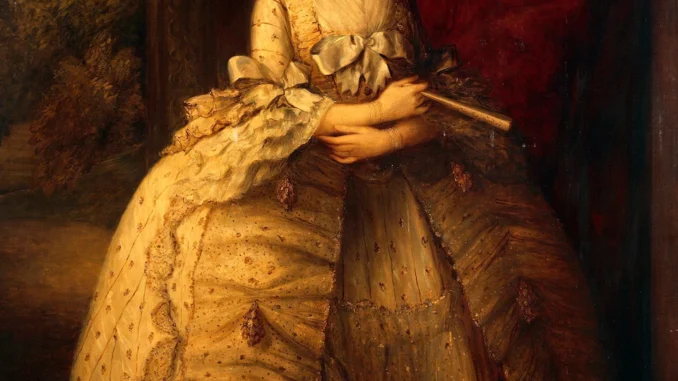
Bridgerton’s portrayal of Queen Charlotte has prioritized fiction and fancy over the opportunity to tell the true story of an admirable woman
The portrayal of Queen Charlotte (1744-1818) in the TV series Bridgerton as having been of African descent has sadly wasted a splendid opportunity to tell her true story, which is all the more compelling because it is true.
By putting their ultra-woke agenda of twisting history to fit into a Critical Race Theory agenda, the novelist Julia Quinn and producer Shonda Rhimes have passed up the chance to bring the real Queen Charlotte to life, for the first time since Helen Mirren’s portrayal of her in Alan Bennett’s play The Madness of George III 30 years ago.
Because Quinn and Rhimes have claimed that ‘many historians’ subscribe to the theory that Queen Charlotte was of mixed-race descent, it is probably worth pointing out that in fact not one single reputable historian has endorsed this ludicrous myth, which has been swirling about since the mid-1990s without attracting any single piece of genuine historical evidence to support it.
The one ‘historian’ who has put it forward – a Portuguese writer called Mario de Valdes y Cocom – did so in an article in The Journal of Blacks in Higher Education 20 years ago without a single citation or note to support his string of absurd assertions .
Beside Cocom, no historian of any credibility – unless Twitter ranting and unfounded speculation counts as history – has endorsed the theory, and anyone interested in seeing a crushing and detailed refutation of it need only read Lisa Hilton’s scholarly article ‘The “Mulatto” Queen’ in The Critic magazine of last February, which will leave no reader in any doubt about the matter.
Golda Rosheuvel, who plays Queen Charlotte in Bridgerton, certainly puts in a fine performance as a no-nonsense independent woman of strength and character, but it is a great shame that the real Queen Charlotte could not have been portrayed, for her true story equates with any work of fiction.

Princess Charlotte of Mecklenburg-Strelitz – a North German principality about the size of Sussex – was only 17 when she was chosen by King George III of England as his bride, even though the two had never met nor corresponded. He had to marry a Protestant for political reasons and a princess for dynastic ones, and there were only eight available in Europe at the time, most of them Germans like Charlotte.
In a manner rather reminiscent of today’s mail-order brides, the choice came down as much through the process of elimination rather than anything involving love or human connection. One princess was too young at 15, another was thought to be an atheist, another had parents George disliked, another might have involved an unwanted military alliance, and yet another had lunacy in the family (ironically enough, considering what was to happen to George III himself).
In the end, of the eight only Charlotte seemed to fit the bill, despite the fact that she was reputed to be plain, though not ‘hideously ugly’ as the historian Sir Lewis Namier was to allege in the 20th century. Soon after George III sent a courtier to Mecklenburg-Strelitz to propose on his behalf, Charlotte’s mother died, leaving her an orphan. Only days after the funeral, at the age of only 17, Charlotte traveled to Harwich in Essex by sea, in a 10-day journey during which every member of her entourage was seasick except her. She spent the time learning to play God Save the King on her harpsichord.
Landing at Harwich, she was taken straight to London where at 3pm the very next day she was introduced to George at St James’s Palace and was then married to him six hours later, in her bridal gown that she had not previously seen. Seeing her trembling as she continued down the aisle of the Chapel Royal, George’s younger brother Prince Edward whispered ‘Courage, Princesse, courage,’ to her in French, as she did not speak any English. In her marriage vows she said ‘Ich will,’ rather than ‘I do.’
The new Queen afterwards played on the harpsichord and sang before a supper that went on until 3am, when the two virgins retired to bed. Throughout this extremely stressful day, as well as the receptions and nuptial ball that followed, Charlotte behaved with quiet dignity and perfect composure. She might have been George’s last choice of bride on a long list, but it soon became clear that she had been the correct one, and they enjoyed an extremely close and happy marriage, at least for its first four decades. It was something of a ratio in a marital system based upon power politics rather than personal compatibility.
